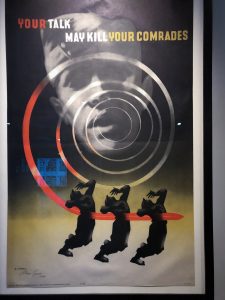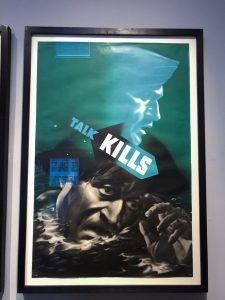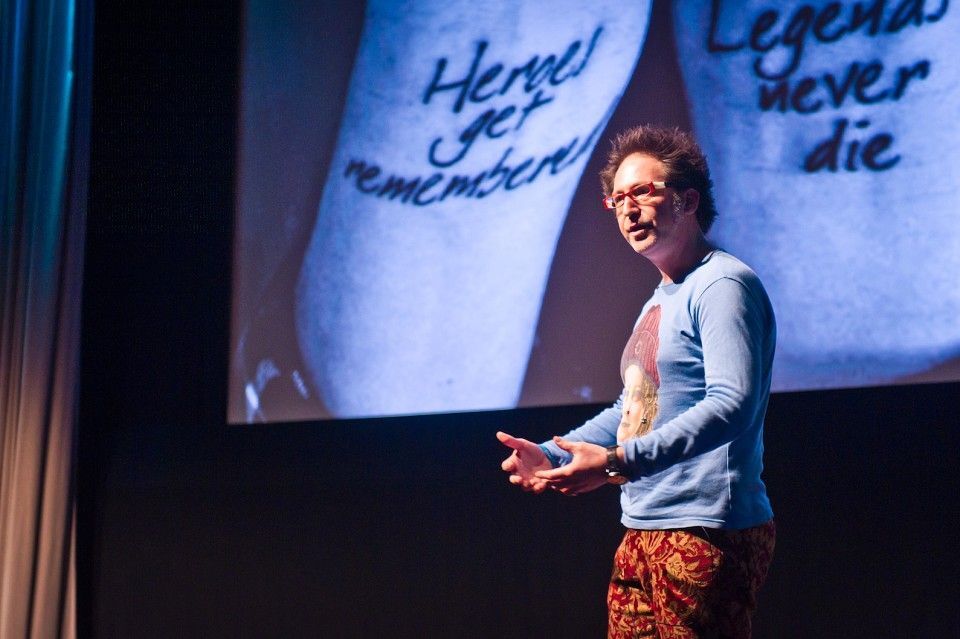
‘Maximum meaning, minimum means’: The Greatest Adman I’d Never Heard Of Was A British Propagandist. – By @Mr_Shankly
By Alex Morris
‘Maximum meaning, minimum means’: The Greatest Adman I’d Never Heard Of Was A British Propagandist.
A nation scarred by the events of the Great War, over 60,000 British men applied to be conscientious objectors during the Second World War.
This was four times the amount of 1914.
So what could be done to encourage more men (and latterly women) to want to join the armed forces?
Step forward a Jewish son of a Latvian-born photographer and a seamstress.
Through clever double images, patriotic colour palettes and short, sticky messaging, Abram Games single-handedly helped enlist more people to help Britain’s war effort in whatever way they could, be that in uniform or as a civilian.
In doing so, he revolutionised poster design.
A master of the elevator pitch, this Scab’s title was his working life’s motto; ‘Maximum meaning, through minimum means’. His work wasn’t there to look pretty (although its surreal influences couldn’t help but attract eyeballs), it served a purpose.
Form followed function.
Old Abes loved a quote, so I’ll group each of my learnings from his exhibition (National Army Museum, Sloane Square, be sure to try the carrot cake [thanks Gigi]) by each of his pearls of wisdom.
1.’The hoarding [billboard] is like “the art gallery of the man in the street”… posters should be selected like the pictures in a gallery”.
Where Army advertising in peace-time has attracted controversy for glamorising its forces and targeting young, susceptible audiences, the war effort in the 40’s was all about national survival.
It was expected for everyone to contribute and fight for Britain’s future. This meant that Games could draw heavily on patriotism in his work, developing a consistent, patriotic palette of colours for his posters with the Union Jack’s red, white and blue featuring prominently.
2. ‘An idea has to be implanted in the audience but it has to be implanted imaginatively, in such a way as to fire the interest and kindle a response to new thinking.’
In order for his messages to live longer in the minds of wartime Brits, Games drew on a range of emotions, no more so than humour.
He tackled difficult and macabre subject matter with wit and imagery. Clever graphics and optical illusions that played with shape and form.
For these, Games used a brighter colour palette and more light-hearted touch for less serious subject matter. ‘Grow Your Own Food’ juxtaposes an image of a spade with that of a ship, advising soldiers to grow crops rather than import food.
Others were more hard hitting. Following the introduction of mass conscription on the outbreak of the war, there was a need to educate new soldiers in many aspects of both public conduct and weapons handling in order to prevent accidents. Games’ campaign warning against ‘loose talk’ were direct and hard-hitting, aimed to be viewed by soldiers rather than civilians.
‘Your Talk May Kill Comrades’ was one of Games’ proudest creations. It combines geometric force with his surreal use of visual puns – soundwaves emitting from a soldier’s mouth can also be seen as an abstracted tongue and as a bayonet. Realistic imagery is combined with silhouettes and abstraction to create an impactful image.
‘This poster banned itself’, wrote Games of ‘This Child Found A Blind’. ‘I had reports than men were taking them down as it reminded them of their children and they couldn’t live with it.’
Some were the complete opposite, appearing aspirational and inspiring. His most well-known work, nicknamed the ‘blonde bombshell’ succeeded in encouraging young women to join the Auxiliary Territorial Service (ATS) which had been viewed as less glamorous than other services.
(Games’ finished work and the inspiration behind the female figure torn from a newspaper [a daily reminder to eat your dots]).
It was incredibly appealing to young women, featuring a young, attractive female, with make-up and perfect hair in full army uniform. MPs fiercely debated the design, objecting to the soldier’s lipstick on the grounds that ‘our girls should be attracted into the Army through Patriotism and not glamour. It is not the kind of poster to encourage mothers to send their girls into the Army.’
But Games knew he wasn’t talking to the mothers.
He was talking to suburban girls with dreams of American squaddies and making something different of their lives.
3.‘To get it down to its simplicity, so that it talked from 50 yards away, that was the difficulty… The idea was to wind the spring. I wound the spring and went through agonies to simplify everything. Then the viewer would have the spring released in his mind and would go through the same process and would come to the same conclusion as I did’.
Profoundly influenced by Surrealism, Games used striking combinations of silhouettes, abstract and geometric elements to capture attention. Much like the fortuity of a precise brief, Games worked with the constraints placed on his colour pallet by rationing to use four earthy colours and tones of black to create vibrant posters.
At the time, designers added lettering to posters by hand. Games disliked this part of the process so he reduced the text to minimal, impactful slogans like ‘Dig for Victory’.
He worked up designs as small thumbnails (or as they were later to be termed by bearded visionary Mr I Hands, ‘scamps’) as he believed a poster needed to convey its message from a distance. Only when he felt the poster was perfect would he add a full stop after his signature.
On client feedback that ‘Venereal Disease’ was too explicit for posters, Games retorted ‘Why not? You need to say exactly what you mean on a poster’.
Amen, A.G.

4. ‘I am not an artist, I am a graphic thinker. I am bad at drawing. What i lack in natural talent, I make up for in solid hard work’.
A final Hard Work Beats Talent.
WWII-stylee.
BUT THE ‘GAMES’ AREN’T OVER.
THERE’S MORE!!!
A BONUS FONT FOR IAN:
SAY HELLO TO BRAGGADOCIO.





















